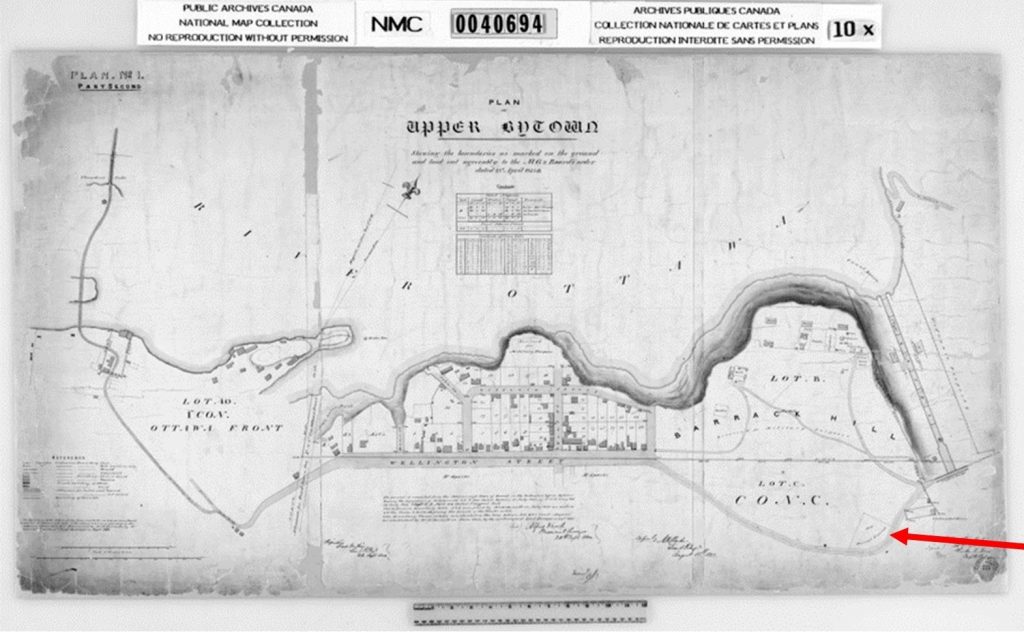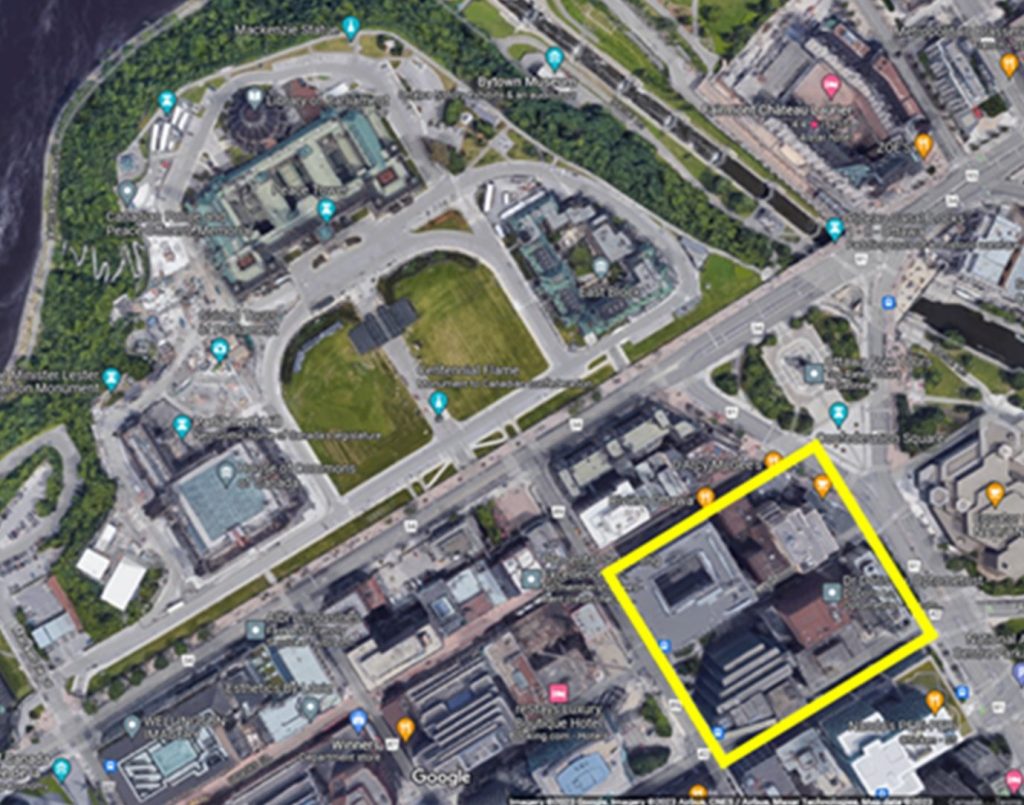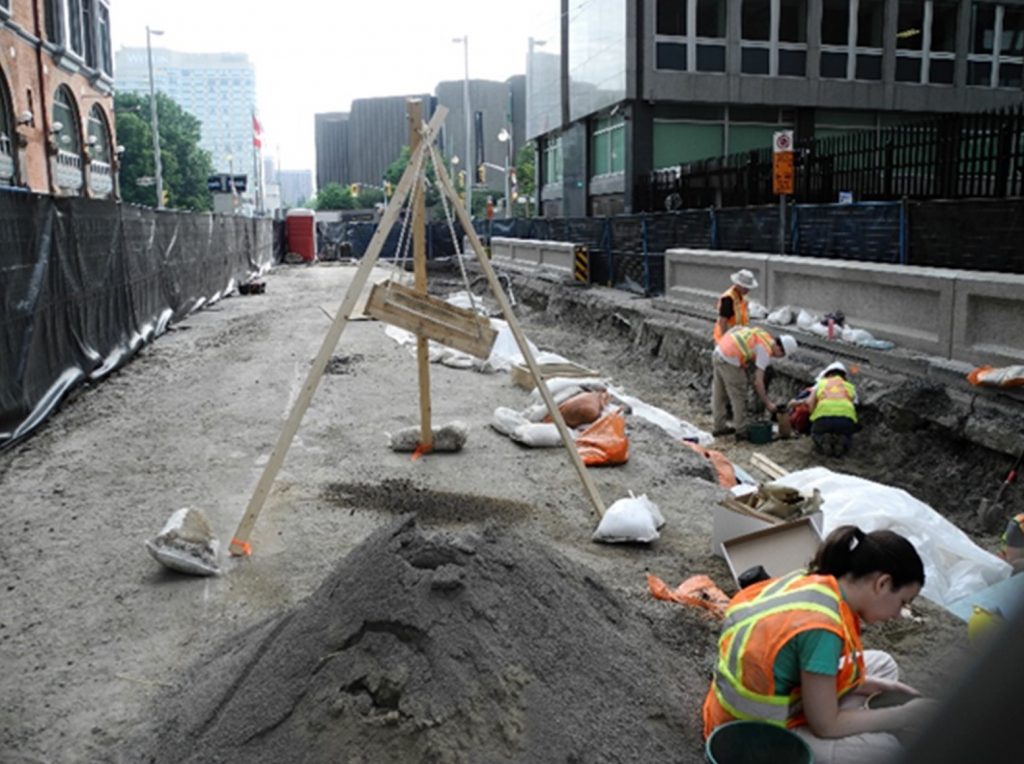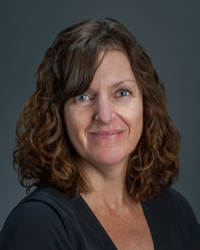Bone Detective: Mysteries of Those Found Beneath Downtown Ottawa – Series Introduction
The Barrack Hill Cemetery was the first settler cemetery in Ottawa, then known as Bytown. It was opened in late fall 1827 or spring 1828 and most likely closed in late 1843. When created, the cemetery lay on a desolate stretch of road running along the edge of a cedar swamp, at the base of a hill.

Map of early Upper Bytown with red arrow indicating the location of the cemetery (Public Archives Canada NMC#0040694)

Downtown Ottawa with the streets surrounding the location of the 19th century cemetery highlighted in yellow (Google maps)
The hill remains and, today, is home to Parliament Hill and the Government of Canada, Parliament Hill. The cedar swamp has long since disappeared, as has the desolate winding road. Today, the area is the site of Ottawa’s downtown core, but the remnants of the cemetery linger beneath the city blocks bounded by Sparks, Albert, Elgin and Metcalfe streets.
In 2013, during infrastructure work, human remains were found. Though earlier archaeological assessments suggested that the historic cemetery had been moved, like many others from the time, this was apparently not entirely correct. The primary and secondary burials of those left behind in the cemetery became the focus of an archaeological mitigation strategy supported by the City of Ottawa.

Queen Street excavations, summer 2014 (Young, 2014)
With the backing of the representatives of the individuals found, I was privileged to assist the archaeologists who performed the excavations at the site and to study the skeletal remains of those excavated. This blog series will introduce you to some of the individuals that were discovered and the mysteries that unfolded during my research. They have provided a window onto a town in its earliest days, through the lens of the lowest socioeconomic class — those who did most of the working, paying, living and dying in the town.
Read more about the findings in the Barrack Hill Cemetery in the blog series, Bone Detective: Mysteries of Those Found Beneath Downtown Ottawa.
- Blog 1 – “The Violated”: Not Buried Alone
- Blog 2 – The Maiden: Could She Have Been a “Mad Hatter”?
- Blog 3 – The “Iron Man” of the Barrack Hill Cemetery: A Life in Contrast
- Blog 4 – A Box of Secrets
- What DNA analysis can tell us about Bytown settlers

Janet Young
Dr. Janet Young is the Curator of Physical Anthropology at the Canadian Museum of History. Her research interests include biomechanical and pathological changes in the human skeleton as they relate to activity patterns and general health outcomes of past and present populations. Her expertise includes museum studies, repatriation, forensics, bioarchaeology, burial practices, and disability.